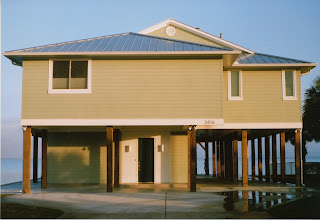I do not want to visit the South Pole, or its northern counterpart, for that matter. But getting close seemed attractive. So last month my wife and I made a trip to Patagonia, timed to match the height of the southern summer. We were very lucky with our companions, our accommodations and the notoriously fickle Patagonian weather.
Although Ferdinand Magellan’s passage early in the 16thcentury and a subsequent navigation south of the continent by Francis Drake opened Patagonia to recorded history, it is only with the entry of English navigators and missionaries in the 19thcentury that a dense description of the area unfolds. Two voyages captained by Robert Fitzroy, the second with Charles Darwin aboard, described the region’s topology as it charted its waters for commercial navigation. Anglican missionaries, beginning in the 1860s when Thomas Bridges first settled among the region’s native people, documented their language and lifeways. We found ourselves amazed that humans would willingly subject themselves to Patagonia’s harsh conditions, coddled as we were in the arms of a safe and well-provisioned National Geographic expedition.
Our trip was divided almost equally between ship and shore. A Chilean-flagged vessel, the Ventus Australius, custom-built to ply the shallow fjords and to raise and lower inflatable boats off the stern, ferried, fed and entertained 152 passengers for a week. The ship navigated parts of the major passages that link the Atlantic and Pacific oceans and visited three of the regions major glaciers. Patagonia holds 15% of the world’s ice, but here, as in the rest of the frozen world, its glaciers are in full retreat. We marveled at the ice, its monumental volume, varied shapes and multi-coloration.
“Paine” is the Tehuelche word for the color blue which appropriately describes the huge rock outcropping at the center of the park. The “torres,” a constellation of peaks foregrounded by Lake Balmaceda bears more than a passing resemblance to the Wyoming Tetons, rising from Jackson Lake. And like the view from Jackson Lake Lodge, the Tierra Patagonia hotel offers a magnificent prospect of the peaks. From the vantage of our room, my wife and I watched the torres each morning and evening as the sun’s light and cloud formations changed the mountains’ mood—bright, dark, hooded, indifferent. We were very lucky.
Fit and daring visitors can arrange to climb several of the peaks or hike the challenging, four-day “W” circuit that reaches the high valleys and glaciers deep inside the park. Even with this kind of strenuous exertion well beyond our capacities, our group of sixty and seventy somethings hiked briskly across the surprisingly diverse lower reaches of the park where rheas, foxes, condors and guanacos displayed themselves. The guanacos particularly charmed me. These wild cousins of the llama and alpaca roam everywhere in the park, sometimes in herds of several dozen animals. While the main body of the herd grazes the sparse grasses, lookouts posted on high ground keep watch for predators. Humans apparently pose little threat in the guanaco’s eyes; here pumas are the enemy. We had the rare privilege of spotting one of these handsome predators when our guide, alerted by a high-pitched whinny sounded by guanaco lookouts across the valley, pointed out a large, golden cat that sauntered out of a patch of grass before disappearing from view.
We all realized our good fortune. The tour organizers provided comfortable accommodations and smoothed the passage across borders and through airports. But they cannot guarantee animal sightings or control local meteorology. We endured just enough rain and high winds to realize how unpleasant and capricious the Patagonian weather can be. As I write, temperatures in Punta Arenas are in the 30s with rain and high winds. We lucked out, for sure.









